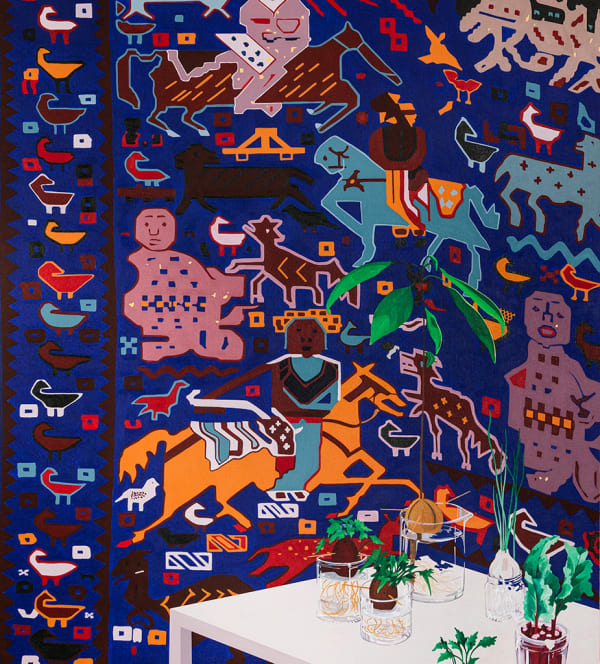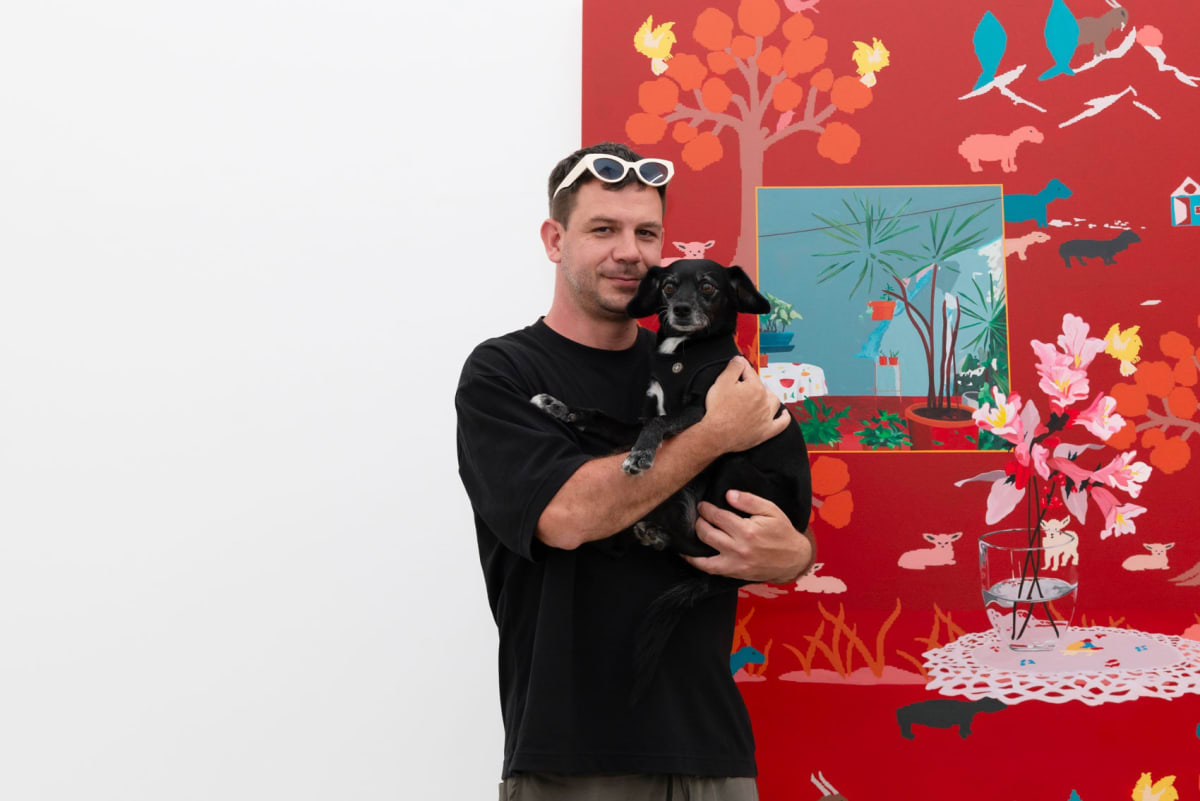Francisco Díaz Scotto - "Where Dreams Touch Ground"
Opening Night Reception:
Saturday, July 22nd
6pm - 8pm
Gallery Hours:
Tuesday - Saturday / 10am - 6pm
Exhibition on view through August 12th
Hashimoto Contemporary LA
2754 S La Cienega Blvd.
Los Angeles, CA 90034
Advance Collector's Preview:
An advance collector's preview will be made available online before the exhibition opens, if you would like to receive a price list, please contact us at la@hashimotocontemporary.com
-
 Francisco Diaz Scotto, LAPACHO, MONTE, ROJO TORO, 2023
Francisco Diaz Scotto, LAPACHO, MONTE, ROJO TORO, 2023 -
 Francisco Diaz Scotto, FANTASMAS DE LA SIESTA, 2023
Francisco Diaz Scotto, FANTASMAS DE LA SIESTA, 2023 -
 Francisco Diaz Scotto, ESPUMA DE LLANURA, 2023
Francisco Diaz Scotto, ESPUMA DE LLANURA, 2023 -
 Francisco Diaz Scotto, 5 CISNES, 2023
Francisco Diaz Scotto, 5 CISNES, 2023 -
 Francisco Diaz Scotto, CACHAPECERO, 2023
Francisco Diaz Scotto, CACHAPECERO, 2023 -
 Francisco Diaz Scotto, BROTE DE SOL, 2023
Francisco Diaz Scotto, BROTE DE SOL, 2023 -
 Francisco Diaz Scotto, EUPHORBIA, 2023
Francisco Diaz Scotto, EUPHORBIA, 2023 -
 Francisco Diaz Scotto, Margaritas De Noche, 2023
Francisco Diaz Scotto, Margaritas De Noche, 2023 -
 Francisco Diaz Scotto, De Sol Naciente, 2023
Francisco Diaz Scotto, De Sol Naciente, 2023 -
 Francisco Diaz Scotto, Untitled, 2023
Francisco Diaz Scotto, Untitled, 2023 -
 Francisco Diaz Scotto, CANDIDO, 2023
Francisco Diaz Scotto, CANDIDO, 2023
LOS ANGELES—Argentinian artist Francisco Díaz Scotto merges worlds real and imagined in his second solo presentation with Hashimoto Contemporary, Where Dreams Touch Ground. This series of chromatically pungent works highlights the artist’s talent for imbuing his still life and floral paintings with passion and tenderness, pulling from warm memories or familiar environments to create visions of home.
This new series of paintings combines moments from Díaz Scotto’s surroundings with memories or dreams about familiar environments. Textile patterns of oranges, bouquets, or farm animals are broken up by moments of reality, which manifest as an avocado plant sprouting roots in a glass vase or a ñandutí cloth or rug (an intricate type of lace native to Paraguay). The painter’s interest in ornamentation leads him to highlight how “naïve” scenes on blankets, tapestries, wallpapers, or tablecloths can reveal something about a culture and its history. Weaving together textures and subjects of (someone’s) daily life and representing objects that stand in for multiple global territories, the artist expands his influences from the purely personal to a shared visual culture that encompasses the mobile histories of colonialism.
About the exhibition, Díaz Scotto writes that he “takes a step further to show how the archetypes of nature compose diverse cultural traditions, the objects that reflect multiple territories. Throughout the length and breadth of his canvases, the artist revisits a family history shaped by migrations and local displacements. He takes us back to the textures of past daily life that still give a sense of homeyness; to the fabrics wrapping things we remember dearly. His paintings retrieve the stories imprinted or woven into these fabrics, telling them in present tense: the voice that tells the story for another one to dream.”
























